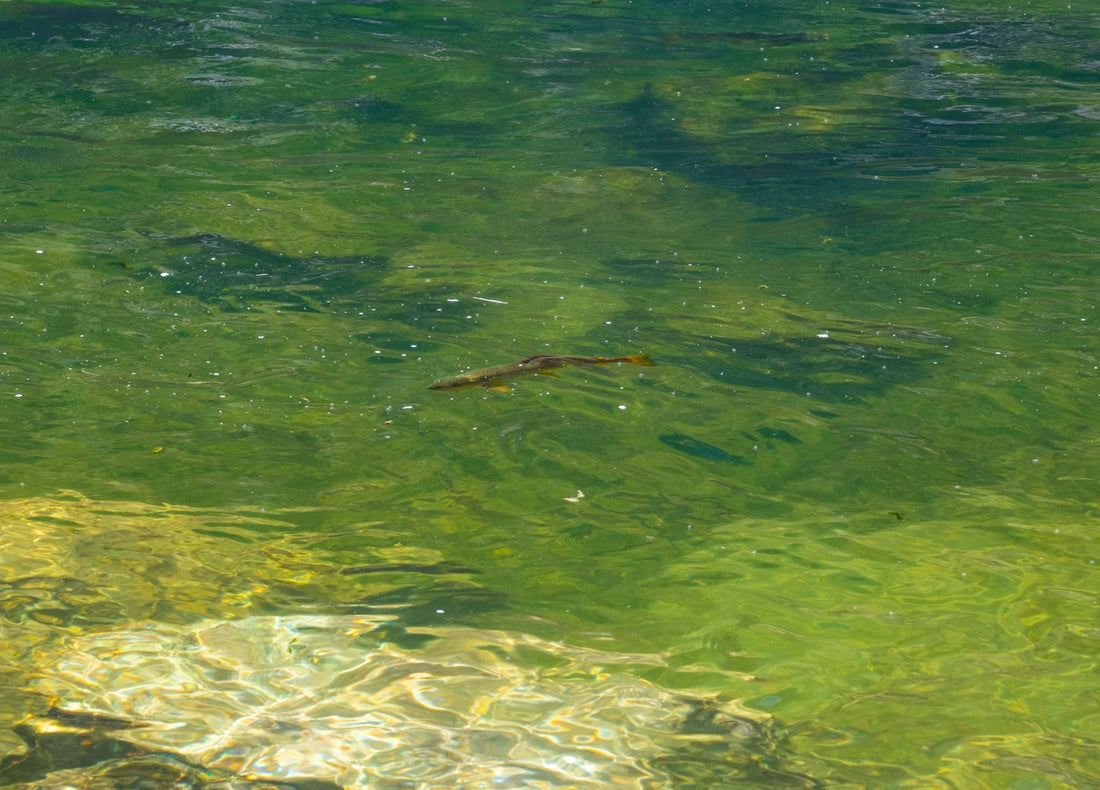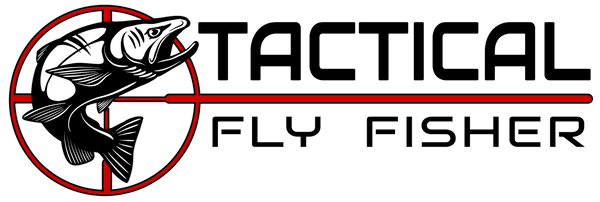
Precise weight adjustments lead to proper sink rate and more fish.
Share
A couple weeks ago I spent several days with my good friend Connor Murphy on Utah’s Green River. There are two reasons I normally go to fish the Green. 1. To fish dry flies to rising fish. 2. To sight fish. Back before I started competitive fly fishing, I made a lot of trips to the Green to practice spotting fish and to learn how to target fish which I had spotted. For a while I was pretty obsessed and would rarely fish unless I could spot a fish first. The skills earned from those trips have been very useful over the years whether in competitions, on my local waters, or in New Zealand.
The first day that Connor and I fished we mostly targeted shallower glides and riffles. Given the extremely clear water on the Green River and the longer distances required when approaching fish in these water types, in addition to a day of excessive wind, we mostly fished dry droppers on 15’ leaders the first day. The second day the wind slackened, and we targeted a mix of water types including smooth flats and eddies along with boulder strewn runs and pocket water. In any of the more turbulent water, we were able to approach fish closely enough to use a Euro nymph rig and it was deadly.

We had come to target the famous Baetis hatch but it was largely non-existent while we were there. I was only able to catch one or two fish each day on dries as there were very few rising fish to be found. However, we were pretty successful on the fish we targeted. I would estimate we had around a 75% take rate on the first day. The second day our success was similar with the longer distance dry dropper rig in smoother water, but it increased to around a 90% take rate on fish we could Euro nymph to.
There were lots of reasons why we had good success despite the lack of fish catching we saw going on around us by the majority of anglers. These included targeting spotted fish and the ability to spot fish in challenging water, precisely timed and executed mends, rigs designed to provide delicate presentations, accurate and precise casts, matching the buoyancy of the dry fly to the weight of the nymph for maximum strike detection, correct fly pattern choice, proper positioning relative to the fish, employing very thin tippet (7x) for the least amount of friction induced drag, and likely many other variables which add to success or failure on the water. However, the variable I want to focus on in this post is choosing the correct amount of weight to provide the proper sink rate and sinking vector.
In my book Tactical Fly Fishing: Lessons Learned from Competition for All Anglers, I talk about the importance of the proper sink rate on page 174 in the chapter on glides. In that instance, I discussed how a reduction of one bead size greatly increased success rate when fishing to sighted fish in a glide on a small Utah river with my friend Kurt Finlayson. The fish that Kurt and I were targeting received very little fishing pressure compared to many rivers but sink rate was still a critical element of success. Imagine how much more critical it is likely to be where fish have seen lots of anglers and presentations.
On the trip with Connor, every time we spotted a new fish, we stopped to analyze the depth and speed of the water where the fish was holding. We also observed whether the fish was actively lifting through the column to eat nymphs in the drift or if it was staying closer to the bottom and was unwilling to move far for potential food items. Based on this information, we were able to decide what weight of nymph(s) we needed, what length we needed from our dry or sighter to our nymph(s), and how far above the trout we needed to cast to achieve the correct depth.

What type of sink rate should you be looking for? In my opinion, one of the most widely held detrimental beliefs among nymph fisherman is that your nymphs should be “bouncing the bottom”. Perhaps this is why we recently heard from an angler who tried Euro nymphing that he gave up after not catching fish and losing a couple dozen flies. I think those two issues were correlated for multiple reasons.

Photo above by Connor Murphy.
The simple fact is that most of the time trout are drift feeders and not benthic (bottom) feeders. The placement of their eyes above the lateral line predisposes them to see best, and thereby eat best, at or above their position. If a trout wants to eat below the mid-point of their body, they must tilt their head down and raise their tail up. This occasionally happens in slow water where trout will pick food items off of weeds or out of silt, but it is normally more beneficial energetically to allow the current to bring the food to them.

How should your presentation change to fit the drift feeding behavior of trout? It’s pretty simple. If your flies are bouncing along the bottom they are under the fish and are less likely to be seen and eaten. Furthermore, even if you achieve the correct depth, your fly can still be sinking too quickly when it reaches the trout to appear natural to the fish. Let me illustrate the concept in the slides below.
Note: while the slides below depict a dry dropper and a trout that is being sight fished, the same concept applies to Euro nymph rigs and to blind fishing likely holding lies where fish haven’t been spotted. In the latter case, you must predict where potential trout are likely to be and adjust accordingly.
In the slide below, the chosen nymph is too heavy for the depth and speed of the water where the trout is residing. As a result, during the drift the nymph sinks too quickly and is under the trout by the time it reaches it. Even if the cast is made closer to the trout and it attains the proper depth when it reaches the trout, the nymph will appear more like a vertically sinking stone than a naturally drifting nymph that is worth eating. If you are routinely hooking bottom before you reach your intended holding lie, or a fish you have spotted, then you are likely fishing with too heavy of a rig and you should consider switching to flies with less weight. You should not be ticking bottom until you are past the trout.


In the slide below the reverse situation is occurring. If you have too little weight, then the nymph stays high in the column and drifts over the fish where it will require too much movement and energy for the fish to intercept and eat it. While you could cast further above the fish to allow more sinking time, your drift space may be limited by upstream obstructions and turbulence. In addition, the further above the fish you need to cast, the more opportunity there is for inaccurate casting and for drag to creep in as your fly approaches the fish.
One way to tell if you don’t have enough weight is to let the rig drift a long way past the fish. Assuming the water is similar in speed and depth, if you never tick bottom you likely need to add more weight. A more subtle and effective method is to watch the tension and speed of your leader and tippet. If your rig slows down ever so slightly as it approaches the fish, this likely means that your nymph has “downshifted” into slower currents near the bottom of the river and it is pulling back on your dry fly or your sighter when Euro nymphing. In addition, if you can see your tippet floating on the water and/or never coming tight as it approaches the fish, this is a clear sign that your fly is drifting high in the column and hasn’t reached the slower currents in the lower portion of the column.


If you have picked the ideal weight (and length of tippet) then you should be able to create the situation below. When your rig is just right, your nymph will descend to the level of an approaching fish so that it requires very little movement and effort to be eaten. Furthermore, the descent of the nymph will not be so vertical that it appears too heavy to be a natural food item when cast an appropriate distance above the fish. The casting distance above the fish may be as short as one foot away in turbulent pockets with little drift space, to as much as 20’+ above the fish when targeting spooky deep dwelling fish in New Zealand. Each situation is different and will require analysis by you as the angler to decide what is best.

What specific weights did Connor and I fish during our trip? We fished Quilldigons (Tutorial at this link. Purchase in the shop at this link.) in sizes 16-20 with slotted tungsten 2 mm, 2.3mm and 2.5 mm inverting tungsten beads. By having three gradual increments of weight, we could pick the ideal increment for each fish. Most fish were 1 – 3’ deep and in slow to medium speed water when fishing the dry dropper rig. When Euro nymphing, we added an olive scud to the point with the 2.5 mm inverting beaded Quilldigon on the dropper and adjusted the size of the bead on the scud for each situation.
Whether you are sight fishing to fish in a foot-deep riffle or deep nymphing to fish at the bottom of a pool, choosing precisely the correct weight for your rig can make a big difference to your success. Most of us are lazy and not incredibly happy about routinely changing flies. Furthermore, the same rig may cover a large portion of the river by changing other variables in your presentation. However, if you will pay attention to each location you fish and what your rig is telling you as you fish it, you will find a lot more success if you make weight adjustments to drift your fly in close proximity to each fish and in as natural of a manner as possible.
